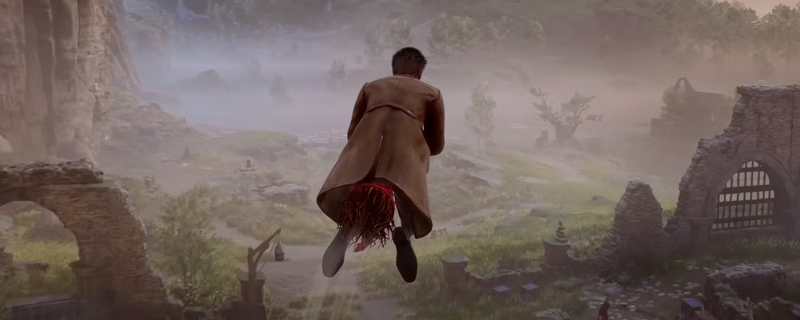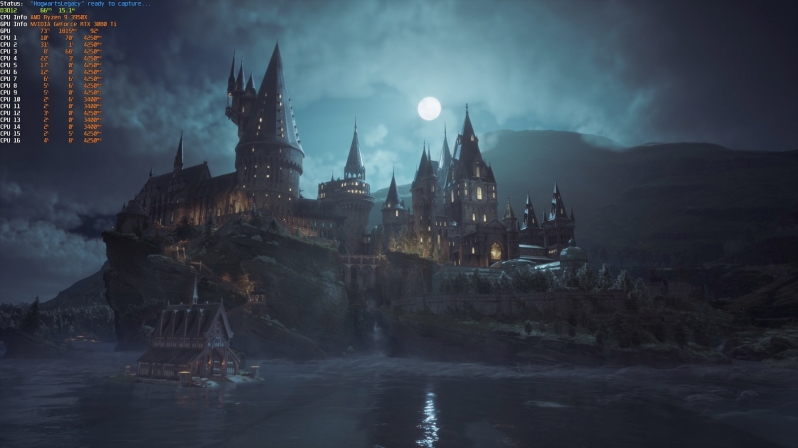Hogwarts Legacy PC Performance Review & Settings Guide
Conclusion
Hogwarts Legacy’s PC version is a glorious mess, and we expect most PC gamers to need to struggle though this game’s graphical options to achieve solid framerates. Let’s face it, most of us own a graphics card with less than 12GB of memory, and that means that Hogwarts Legacy’s highest texture settings are a no-go area, even if we are gaming at 1080p.Â
The first thing that we will say about Hogwarts Legacy here is this, you probably need to turn down this game’s texture settings. If you have a 6GB GPU, 1080p at Medium texture settings is your best bet. If you have an 8GB GPU, 1080p High or 1440p Medium are good candidates. At 4K, you will need a 16GB GPU to not run into issues with Ultra textures. This game demands a lot of VRAM, and if it does not get it, framerates will spike hard. If you are having framerate issues, either in the form of consistently poor performance or sudden huge performance dips, you probably need to lower this game’s texture settings.Â
Another problem that many gamers will face is the fact that Hogwarts Legacy is very heavy on CPUs. For most PC gamers, a stable 60+ FPS framerate will be the best that you can achieve, at least without the magic that is Nvidia’s DLSS 3 Frame Generation tech. If you are having CPU-related performance issues, turning down the game’s population quality and view distance settings will help, but these settings will only have a limited impact.Â
For most PC gamers, you are probably best setting Hogwarts framerate limit to 60 FPS and simply targeting that framerate. You will need a powerful CPU to reach much higher than that consistently, or a RTX 40 series GPU with Nvidia DLSS 3 Frame Generation. With the right settings, most modern GPUs will be able to achieve 60 FPS framerates in Hogwarts Legacy, even older GPUs like AMD’s RX 480 and Nvidia’s GTX 1060. For those two GPUs, we recommend Medium settings at 1080p with FSR set to performance mode. You’d be surprised how good FSR 2 looks at 1080p.Â
Hogwarts Legacy’s PC version is greatly enhanced by the upscaling/super resolution technologies that it has at its disposal. These features allow GPUs to perform outside of their weight class at high resolutions, and they also allow older GPUs like AMD’s Polaris based RX 480 to achieve a solid 60 FPS with a 1080p output resolution. Not bad for a mid-range 2016 GPU running a game that’s around seven years newer.
With the right amount of tinkering, most PC gamers should be able to achieve solid framerates in Hogwarts Legacy, assuming that you don’t turn on ray tracing or try to run the game on a potato of a CPU.Â
On the topic of ray tracing, our recommendation is to simply ignore it. Ray traced shadows and ambient occlusion are hard to notice and have a huge performance hit, and ray traced reflections are not used widely enough and often present more graphical issues than they are worth. Ray tracing has a huge performance hit, and makes an already CPU-limited game even more CPU-limited with GPUs like the RTX 4090. These effects are simply not worth using.
I you are a fan of ultra high framerate PC gaming, we have some bad news for you. This game is CPU-limited enough that 120Hz framerates are essentially only achievable on Nvidia’s RTX 40 series thanks to their DLSS Frame Generation (DLSS 3) technology. That likely means that you need a new graphics card, or you need to settle for a lower framerate target. In Hogwarts Legacy, DLSS 3 is magic. It’s like you are cast “frameratus doubello” on your PC, and it actually working. For CPU limited games like Hogwarts Legacy, Nvidia’s latest AI feature is a godsend.
Hogwarts Legacy is a great game, but its PC version has its troubles. This game could use some form of VRAM warning to let gamers know if VRAM capacity will be an issue, or a better way of handling VRAM overallocation. Beyond that, we also found a bug that DLSS Frame Generation could not be used with Nvidia’s DLAA anti-aliasing feature, which is a problem that we hope gets patched soon.
We hope that this performance guide will help you find the right settings for Hogwarts Legacy. You can join the discussion on Hogwarts Legacy’s PC version on the OC3D Forums.




